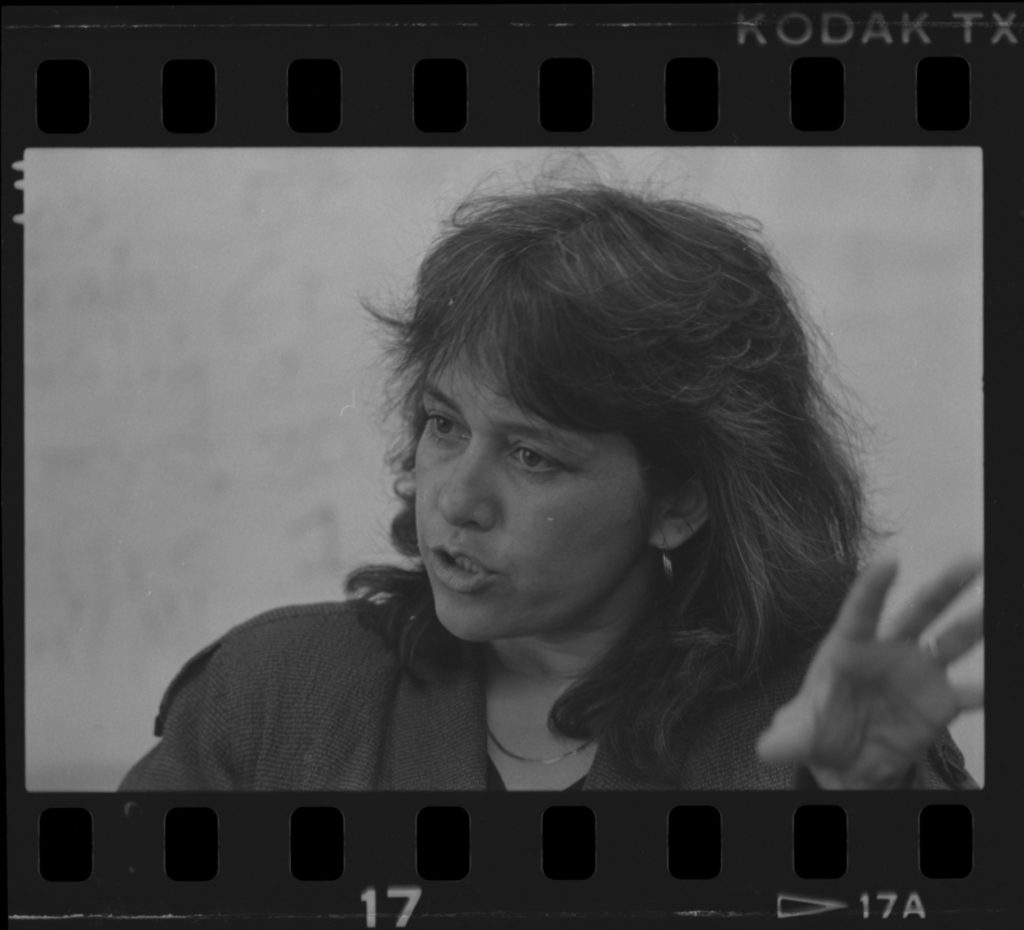Maria Elena Durazo recalls her first organizing job
On a trip to Mexico I met Cristina Vázquez and others from the International Ladies’ Garment Workers Union (ILGWU or ILG, now Workers United-SEIU). And when we came back, Cristina referred me to the union for a job. I was already familiar with the work of the ILG at that point. It was the only union that was openly, aggressively organizing immigrants. They were doing things like challenging the INS for raiding the factories without arrest warrants. In conjunction with its aggressive program of organizing workers in the shops, the ILG also had a legal program that backed it up to push the INS out of the shops. Because ultimately, as long as they continued with those raids, it was gonna be pretty much impossible to organize. So I just loved the fact that they were so bold and they were out there on the front lines in a vanguard position.

The ILG was “willing to break with the traditional way of looking at immigrant workers.”
Once I got to know Cristina I saw the way that the ILG approached organizing. It was very experimental in the sense that the organizers were given the freedom to organize anyway they liked. “Figure it out, do whatever you can. Be creative!” They were almost, in a sense, given carte blanche, instead of, “This is the way, and this is the only way.” All those elements made the ILG even more appealing to me.
In those days some unions supported the INS going into factories because they felt that undocumented workers were the main obstacle to organizing. The argument was that, one, those workers are more likely to be scared to support the union because they are so afraid of deportation. And that, two, they were used as cheap labor. Workers knowingly would work for far less because they were so desperate to work that they didn’t care. And the unions saw that as detrimental. And in a sense it is, right? If a worker doesn’t care what his or her standard of living is, is willing to work for anything and is willing to get treated any way, then it is detrimental to a union movement. The probelm is, if you don’t attempt to organize them, then you’ll never break them of that.
It always takes someone or some organization to break through and try something different. That’s why I was so attracted to the ILG, because they were willing to break with the traditional way of looking at immigrant workers. They really believed that these workers could be organized. It’s partly that they had a far greater history than most unions of organizing immigrants. It’s in their history, in their practical experience. It wasn’t like other unions that never had it and all of a sudden had to come to grips with it.
From Ruth Milkman and Kent Wong, eds., Voices from the Front Lines: Organizing Immigrant Workers in Los Angeles (UCLA Center for Labor Research and Education, 2000), 12-13.
